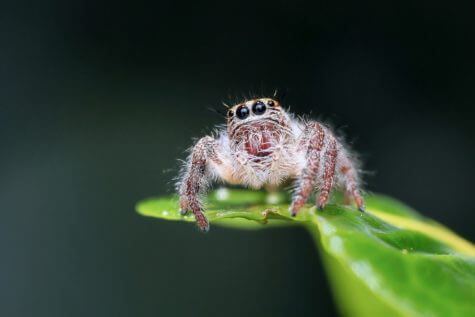ITHACA, N.Y. — Many animals in danger of being attacked by a predator naturally keel over and play dead, a state known as “tonic immobility.” But some spiders take on a different tactic when threatened, pretending to be ants as a means of turning off their attackers, a new study finds.
Spiders may creep out plenty of humans, but when it comes to other creatures, some types of arachnids are often the hunted instead of the hunters. Conversely, ants aren’t a favorite snack for predators thanks to a robust defense system and a natural aggressiveness. Not only can ants bite, but they can inflict a painful sting and even stun opponents with a chemical spray called formic acid. And don’t forget the army they’ll call in for help, if needed.

So it makes sense that pretending to be an ant might be done to as a keen way to scare off predators.
Researchers at Cornell University sought to confirm this theory among M. formicaria, the species of jumping spiders known for mimicking ants, and figure out why they put on the impressive act. The team collected five of the ant-mimicking jumping spiders, four wood ants, and five common jumping spiders of the species that do not use mimicry. Using high-speed cameras, they recorded each spider and ant walking across a glass surface. They then played that video on a screen in front of a larger spider known for preying on jumping spiders. Bait was presented to the predators beforehand to ensure they were hungry and in the mood for a kill.
The recording indeed showed how the jumping spiders take on the appearance of ants — walking in zig-zag motions and stopping very briefly to hoist up their front legs and wave them around to appear as antennae. Previous research indicated the spiders walk on six legs, but the high-speed video showed that the brief pauses show they’re still using all eight legs to move.
Incredibly, when video of the ants or the ant-mimicking jumping spiders was played, the predatory spider lunged at the screen less often in an attempt to snatch the prey. When a typical jumping spider came across the screen, however,, the larger spider was about three times more likely to try and attack it.
“This study illustrates very nicely how mimicry in many animals is a function not just of physical appearance but also of behaviour,” Martin Stevens of the University of Exeter told the New Scientist. “Crucially, rather than subjectively assessing mimicry with human eyes, the study shows that the spiders that did the mimicking were less likely to be attacked by predators, demonstrating the advantage mimicry brings to survival.”
The study’s findings were published last week in the journal Proceedings of the Royal Society B.

Comments